For the past few years Early Childhood Education professor Dr. Patti Bailie has been implementing an assignment that requires students to plan, design, budget for, and create a visual of a proposed childcare center. This is a very in depth, hands on assignment that allows students to express their creativity while learning about the processes that go into planning an environment for young children.
Planning Environments for Young Children (ECH 420) is an upper-level course offered every fall semester and has evolved greatly over the years. Students engage in a three-phase process of designing a learning  environment that incorporates indoor and outdoor spaces. First, students are put into groups of three and interview early childhood educators and directors to get their input on what is important to include in the space. They then write a program for their proposed center, draw out the environment to scale, and decide what materials need to be in the environment. This assignment requires a lot of work and new knowledge, as students need to draw the space with proper dimensions that align with childcare center policies, create a budget and a list of all of the materials they would need, and consider any challenges that may evolve through this process.
environment that incorporates indoor and outdoor spaces. First, students are put into groups of three and interview early childhood educators and directors to get their input on what is important to include in the space. They then write a program for their proposed center, draw out the environment to scale, and decide what materials need to be in the environment. This assignment requires a lot of work and new knowledge, as students need to draw the space with proper dimensions that align with childcare center policies, create a budget and a list of all of the materials they would need, and consider any challenges that may evolve through this process.
Another interesting aspect of this assignment is the implementation of nature based education. Professor Bailie has expertise in the field of nature based education, which is the promotion of using the natural outdoor environment to encourage children to explore and learn from their organic surroundings. “The  whole idea of nature based education and nature play areas is taking hold in preschools and elementary play environments, so I am excited to implement it more,” said Professor Bailie. “I am excited to see pre-educators taking this mindset and enjoying this topic as well.”
whole idea of nature based education and nature play areas is taking hold in preschools and elementary play environments, so I am excited to implement it more,” said Professor Bailie. “I am excited to see pre-educators taking this mindset and enjoying this topic as well.”
Not only do ECH 420 students engage in planning the environment, but geography students have played a part in the past, as well. In the Fall 2015 semester, geography Professor Matt McCourt partnered with Professor Bailie to create a co-lab, incorporating the expertise of students in both fields to create a sustainable nature based environment. Geography students surveyed the land next to the Sweatt-Winter learning center located on campus to determine where the sun hits the land the most, how wind effects that area, rain drainage, and 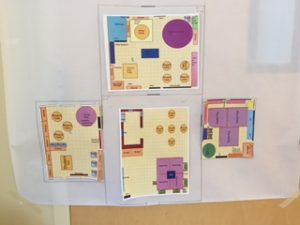 more. Early childhood students then used this information to design and implement a nature based outdoor area for children to use. They created tree stump seats, mud kitchens, and willow tree tunnels to encourage children to engage in the natural resources that surround them. This was a very hands-on experience, as students used chainsaws and other tools to create the materials for the outdoor play area. They then watched their ideas come to life, as the children enrolled in Sweatt-Winter then got to explore the space and learn about the various materials from the students.
more. Early childhood students then used this information to design and implement a nature based outdoor area for children to use. They created tree stump seats, mud kitchens, and willow tree tunnels to encourage children to engage in the natural resources that surround them. This was a very hands-on experience, as students used chainsaws and other tools to create the materials for the outdoor play area. They then watched their ideas come to life, as the children enrolled in Sweatt-Winter then got to explore the space and learn about the various materials from the students.
There has been talk about relocating Sweatt-Winter and building a new space for the center. In the Fall 2016 semester, Professor Bailie’s students proposed ideas which were presented to various faculty and community members in January, including President Foster. While there are no set plans for the new center yet, those involved in the process did write down common themes or ideas that ECH students had that could be implemented in the new center.
Professor Bailie is always impressed with the ideas that students have. One group designed an outdoor trampoline area that incorporated the use of technology, one group created a circle-shaped lobby that had 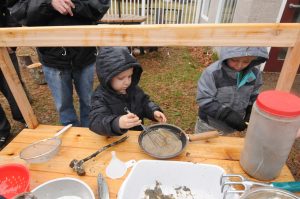 pods extending around it for kindergarten, first, and second grade classes, and one group included various rooms and resources for parents as well. While some groups had similar ideas, no two design proposals were the same. Through this class, students are able to get a taste of what goes into planning a learning environment, budgeting, following policies, and collaborating with other professionals in order to create the best space possible. This is a great assignment that allows students to use their individual creativity while planning.
pods extending around it for kindergarten, first, and second grade classes, and one group included various rooms and resources for parents as well. While some groups had similar ideas, no two design proposals were the same. Through this class, students are able to get a taste of what goes into planning a learning environment, budgeting, following policies, and collaborating with other professionals in order to create the best space possible. This is a great assignment that allows students to use their individual creativity while planning.
When asked what her favorite part about this assignment is, Professor Bailie said she loves watching it all come together. “Students start off feeling very challenged, but by the end of the semester they are drawing and designing and are excited about their ideas! I like to see the change in students’ attitudes over the semester as these projects come together.”
Are you interested in nature-based education? Professor Bailie has taught an honors nature-based education class in the past, which may be offered again. UMF is also working on developing a nature based education minor program available to all students, not just education majors. Keep an eye out for more information about various nature based programs offered at UMF, including the Nature Based Education Summer Institute taking place on campus this summer!
For more information about the co-lab that took place in 2015, read the article about it here.
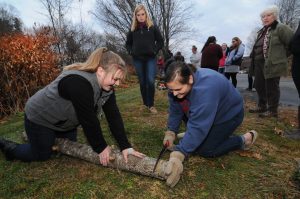

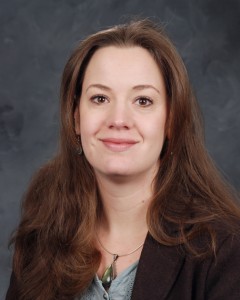 Dr. Leigh Ann Fish is coming to UMF from Troy, Ohio where she worked in public education as an elementary teacher and coordinator of gifted and talented education.
Dr. Leigh Ann Fish is coming to UMF from Troy, Ohio where she worked in public education as an elementary teacher and coordinator of gifted and talented education.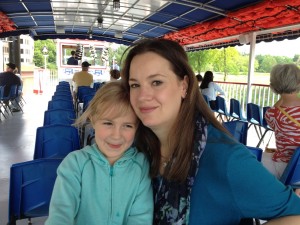 her husband and two young daughters hiking/kayaking, exploring historical sites, and trying her hand at modern-day “homesteading” on their 18th century farm.
her husband and two young daughters hiking/kayaking, exploring historical sites, and trying her hand at modern-day “homesteading” on their 18th century farm.

 ly-to-farm summer camps where entire families learned about the origins of their food and food preparation. I also have two children who are now 18 and 20 years old. When they were younger we spent hours (and hours) every day reading.
ly-to-farm summer camps where entire families learned about the origins of their food and food preparation. I also have two children who are now 18 and 20 years old. When they were younger we spent hours (and hours) every day reading.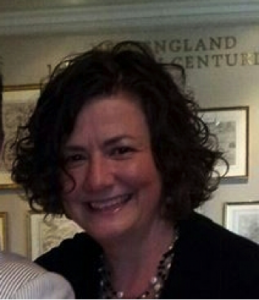 Julia Jeremias is the new Early Childhood Education Off-Campus Bachelor’s Degree Program Advisor and Coordinator. Julia comes to UMF from southern Maine where she is adjunct faculty in the early childhood department at Southern Maine Community College.
Julia Jeremias is the new Early Childhood Education Off-Campus Bachelor’s Degree Program Advisor and Coordinator. Julia comes to UMF from southern Maine where she is adjunct faculty in the early childhood department at Southern Maine Community College. After graduating from Mount Holyoke College and Lesley University, Julia started her life in education as a toddler teacher and continued in various rolls from teacher to public school administrator, until her family was transferred to Maine.
After graduating from Mount Holyoke College and Lesley University, Julia started her life in education as a toddler teacher and continued in various rolls from teacher to public school administrator, until her family was transferred to Maine.